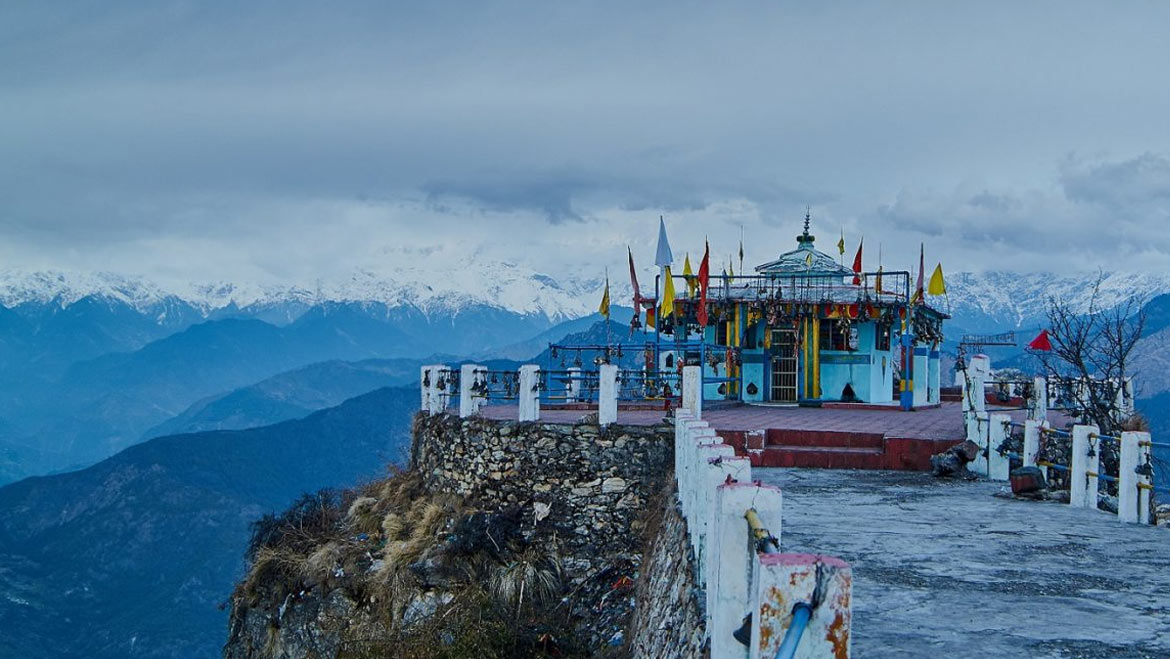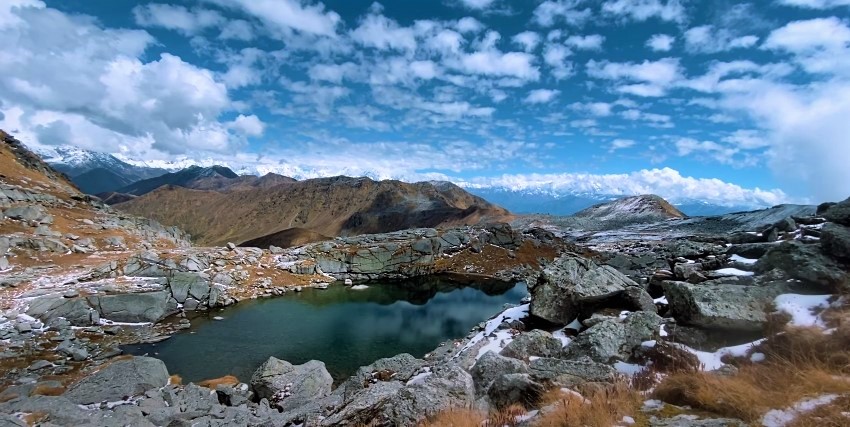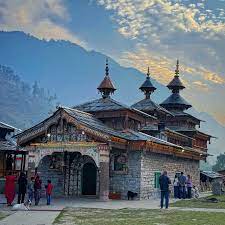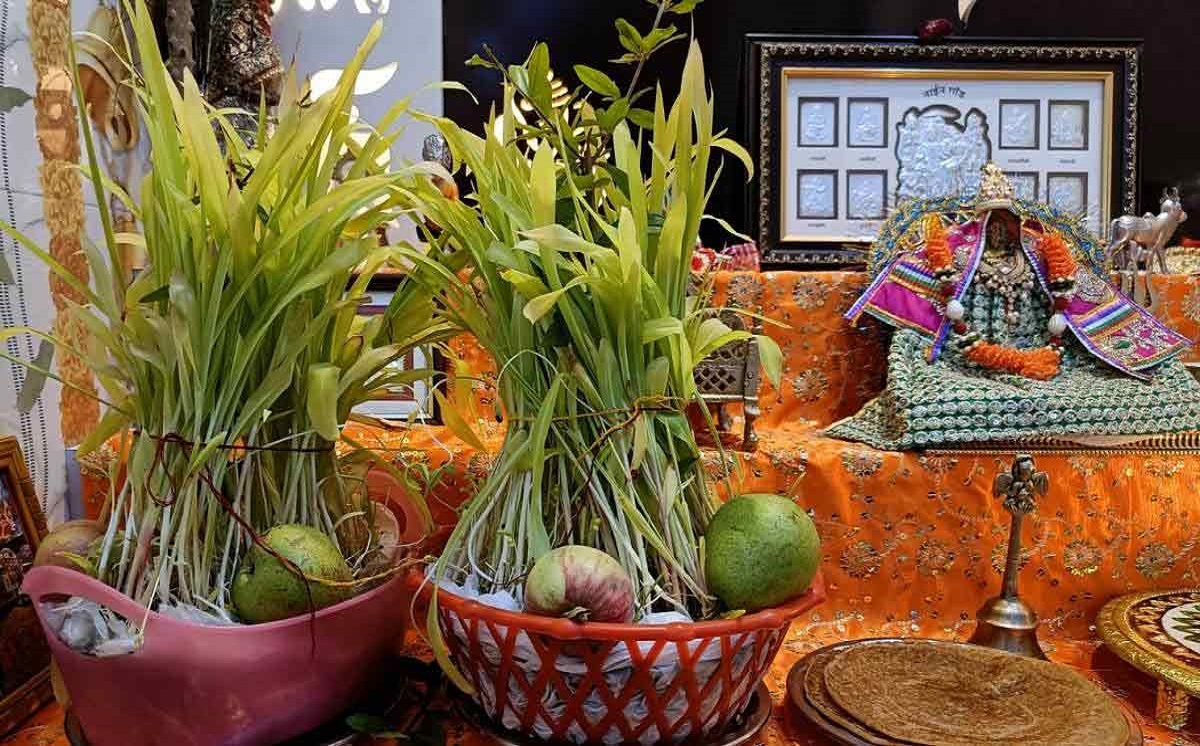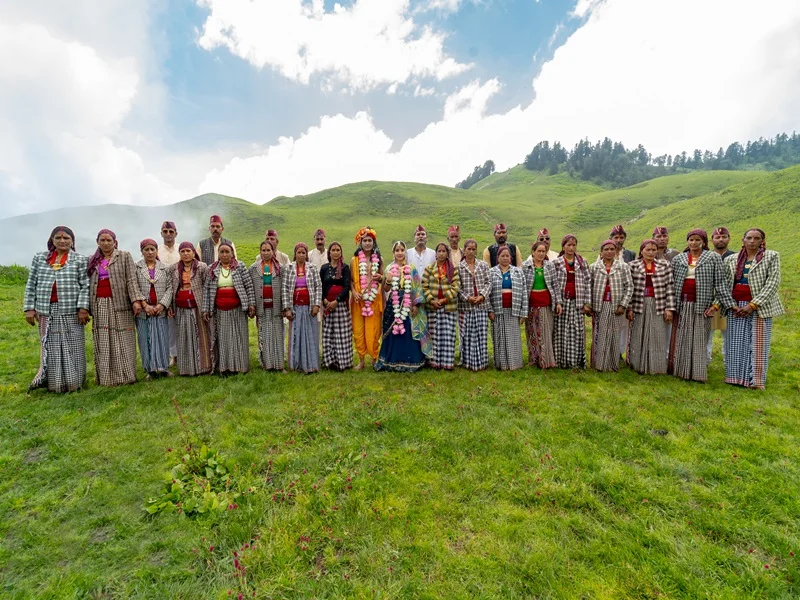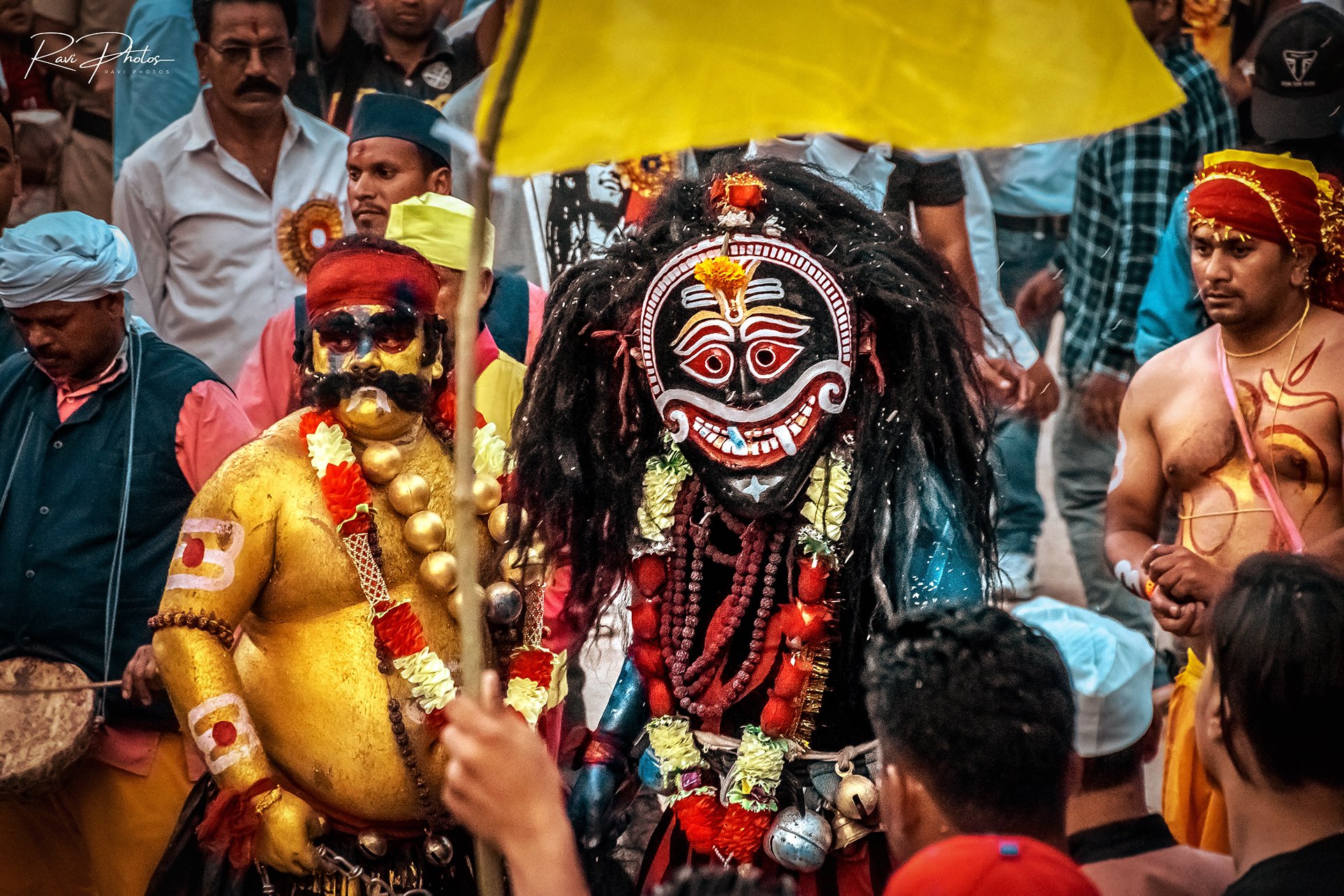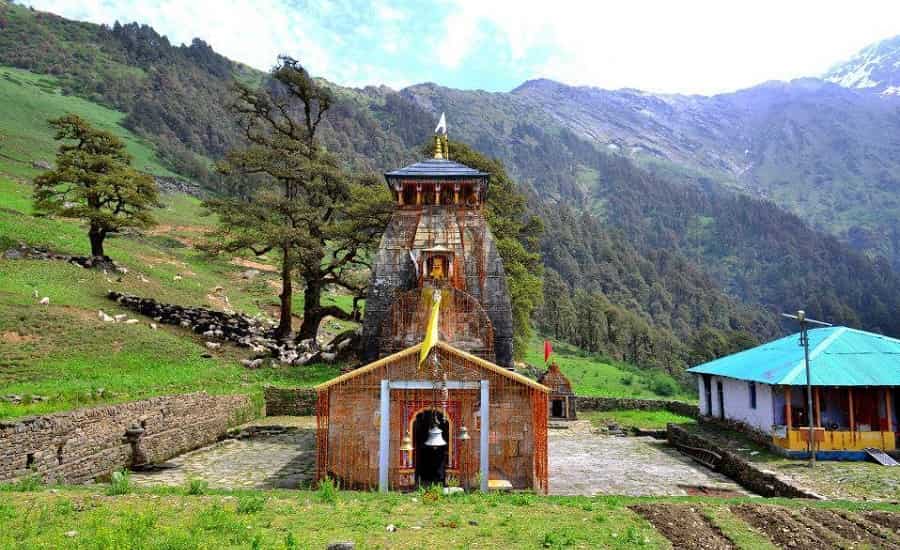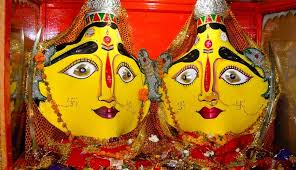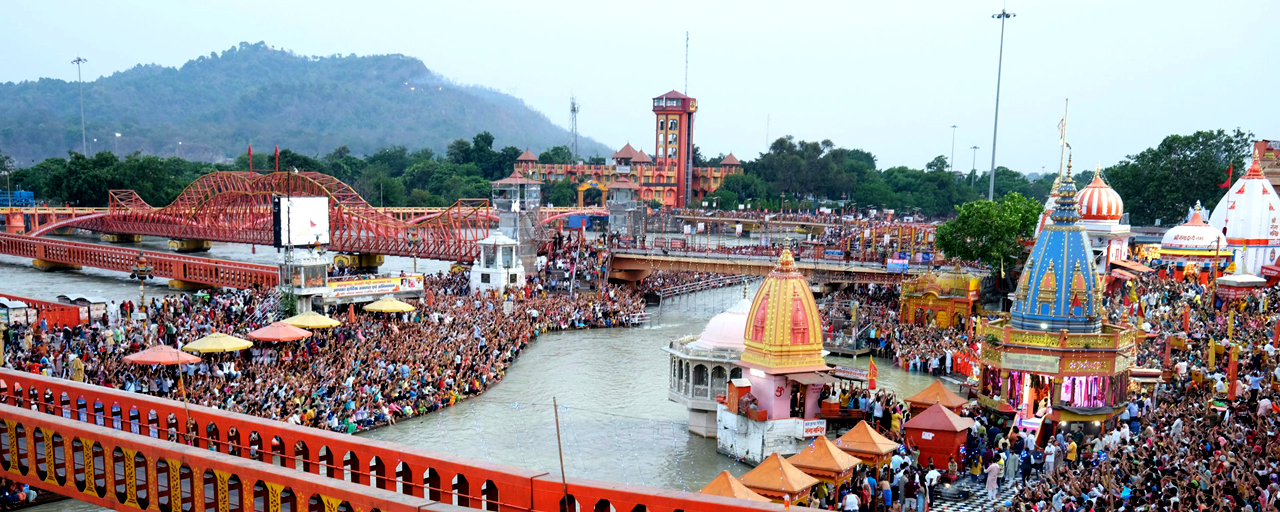You leave the road at Kanakchauri. A small village, tea stalls, and a few kids running barefoot. The path climbs right from here. Just three kilometres, they say. Doesn’t sound like much. But the climb makes you stop, breathe, and look around. Pine needles crunch underfoot. The air smells of resin. Sometimes the clouds drop low, wrapping you in white. Sometimes they open up, and the ridges stretch as far as your eyes can see.
By the time you reach the ridge, you already sense lighter, not due to the fact that the stroll changed into easy, but as it slowed you down.
The Story People Tell
The temple is for Lord Kartikeya, son of Shiva and Parvati. The story goes that he presented his body to his dad and mom when Ganesha was chosen as the first to be worshipped. What remains here are his bones, his devotion, turned into stone and memory. Inside the sanctum, the idol is pale, skeletal. Yet it doesn’t feel lifeless. It feels raw, like a sacrifice made visible.
Villagers say Kartikeya meditated here, high on this ridge. The wind still carries that silence.
The Trek That Becomes a Prayer
It’s not long, this walk from Kanakchauri. But every step feels like it’s asking something from you. Breath. Patience. Attention. You notice wildflowers along the trail, red बुरांश (buransh) if it’s spring. Prayer flags tied to trees, fluttering. Somewhere in the distance, the Mandakini river glints silver.
By the time you reach the top, the climb has done its work. Your thoughts are quieter. Your steps are slower.
The Temple Itself
The temple is small, almost plain. Whitewashed walls, a few bells hanging, a flag snapping in the wind. Inside, Kartikeya waits. No crowd most days. Just the priest, maybe one or two pilgrims, and the soft smell of incense.
Step outside, and the view opens wide. The peaks of Chaukhamba, Trishul, and Nanda Devi standing tall, snow burning gold in the sun. On some days, clouds hide them, and it feels like the temple is floating above the sky.
What It Feels Like to Be There
The stone floor under your feet is cold. The air is thinner, sharper. A bell rings, and for a moment, everything else falls silent. Children tie red threads, men bow low, women whisper mantras. Nobody stays long, yet nobody leaves unchanged.
It isn’t grand. It doesn’t need to be. The silence is the prayer.
Festivals That Bring Life
On Kartik Purnima, the ridge fills with people. The temple is covered in flowers, chants carry through the valley, and bells ring without pause. During the Mahayagya, stories of Kartikeya are told, lamps are lit, and food is shared.
But most days, it’s quiet. A place where you can sit alone, facing the mountains, and let the wind speak for the gods.
Why People Return
Ask a pilgrim why they come back, and answers differ. Some say for blessings. Some for the view. Some just smile and say, “शांति मिलती है (it gives peace).”
- And that’s the truth. Kartik Swami Temple gives you pieces of peace you didn’t know you needed.
- The story of a god who gave everything.
- A trek that turns your breath into prayer.
- A view that makes your troubles feel smaller.
- It all comes together here, high on a ridge where the sky feels close.
Life Below the Ridge
Back in Kanakchauri, life goes on. Tea stalls with steaming cups, warm पकौड़ी (pakodi) fried in small pans, and villagers who inform testimonies of how they climbed the ridge as kids, barefoot, carrying offerings for the god.
During fairs, the village hosts small galas, stalls of chocolates, crafts, and toys. Outside those days, it’s just a quiet place where someone will always smile and show you the way to the trail.
What Stays With You
When you leave Kartik Swami, you don’t carry facts. You carry fragments:
- The wind is pulling on the prayer flags.
- The bell’s sound hangs within the air long after it’s struck.
- The glow of dawn over Chaukhamba.
- The flavor of tea lower back within the village was sweeter after the climb.
- The silence inside the temple is so heavy it feels alive.
- These are the things that go back later, whilst you least expect them.
Visiting Kartik Swami Temple
Location: a three-km trek from Kanakchauri, Rudraprayag district
Altitude: Around 3,050 meters
Best time: March to June for clear skies, September to November for fairs. Winter, if you want snow and solitude.
How to get there: Reach Rudraprayag, journey through the avenue to Kanakchauri, then start the trek.
Closing Thought
Kartik Swami Temple isn't approximately grand halls or towering idols. It is about a ridge wherein the sky meets stone, and where a god’s devotion still lingers. It is set on foot slowly, feeling your breath, and arriving at a place that answers without phrases.
You go away; however, the silence follows. The mountains keep watch. And someplace, on that ridge, the bells keep ringing for everybody willing to climb and pay attention.

